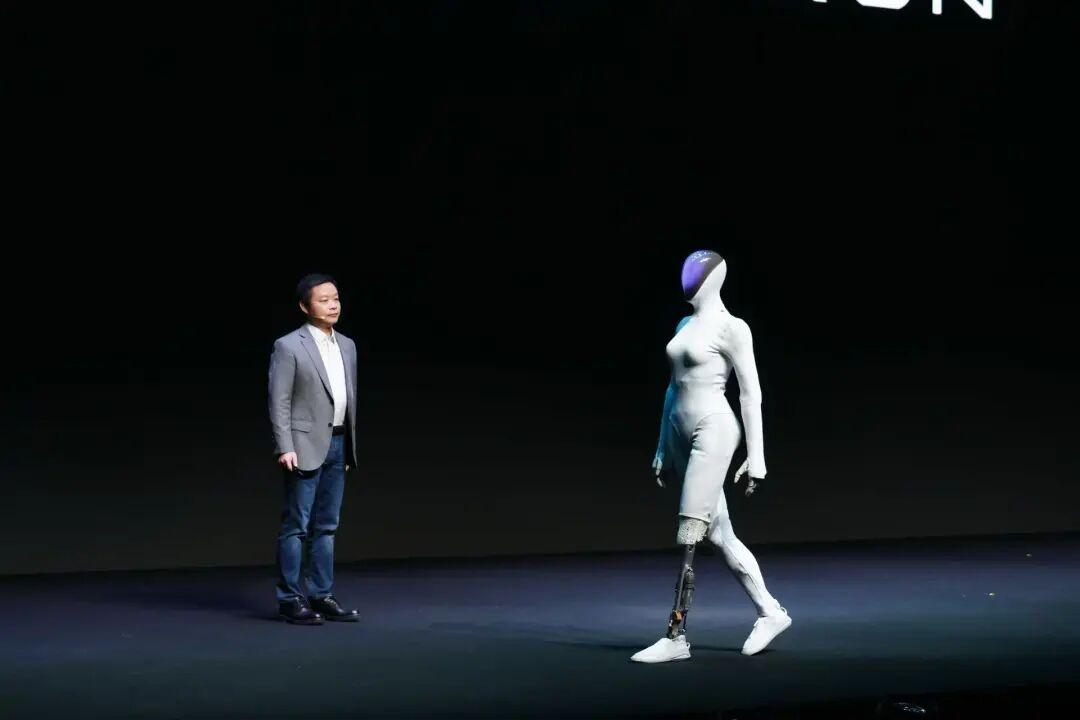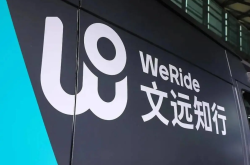Musk Lauds XPENG Robots for "Impressive Build", Taking Competition from Electric Vehicles to Embodied Intelligence
![]() 11/10 2025
11/10 2025
![]() 507
507
Media reports indicate that on November 7th, during a chat, Musk commented on XPENG's robot IRON. In his message, Musk described IRON as having an "impressive build" and gave it a virtual thumbs-up. "Nice. Tesla and China will dominate the entire robot market," Musk remarked. Additionally, Musk praised the robot's feminine attributes, stating, "Other Western robot companies are still lagging. I respect China's competitors because China is home to so many intelligent and diligent individuals."

In response to Musk's remarks, XPENG Chairman He Xiaopeng expressed his delight over Elon's success at the shareholders' meeting, noting that he also cast a vote. Furthermore, he commended Tesla's robots and Robotaxi for their outstanding performance, expressing anticipation for even greater achievements. At the "2025 XPENG Tech Day," XPENG showcased its latest IRON model, which walked with a runway-like stride. This prompted many netizens to question, "It seems like a real person is struggling to portray a robot."

On the morning of November 6th, He Xiaopeng responded via Weibo: "Yesterday at the Tech Day, XPENG's female robot Iron made a spectacular appearance on the runway, stunning the audience. However, over half of the online comments questioned whether a real person was concealed inside the female robot. This left our robot team both amused and speechless. Some people simply can't fathom how rapidly the world is evolving. This morning, they compelled me to shoot an unedited, single-take video to address this question (doubt/query), hoping that everyone can discern the truth and assist us in clarifying it."
In the video, He Xiaopeng reconstructed the entire process of the robot walking the runway and had the robot team unzip the back to fully reveal the internal structure, including the lattice muscles and controller on the back, the transport fixator on the shoulders, the microphone array at the ear positions, and the hand harmonic joints. According to He Xiaopeng, the latest IRON model is a humanoid robot featuring a human-like spine, bionic muscles, and fully covered flexible skin, allowing for customization to accommodate various body types. It also utilizes all-solid-state battery technology to achieve lightweight construction, ultra-high energy density, and safety, ensuring prolonged and safe operation in complex environments for humanoid robots.

He Xiaopeng introduced that the new product is equipped with the second-generation VLA, incorporating three Turing AI chips, and constructs a high-level brain-and-spine capability combination of VLT+VLA+VLM, enabling advanced intelligence such as conversation, walking, and interaction. It also pioneers the industry's first application of all-solid-state batteries, striving for ultimate lightweight construction, ultra-high energy density, and ultimate safety. It introduces robot active safety protection to maximize the safety of participants in the physical AI world and expands the fourth principle to ensure privacy data remains within the robot.
In He Xiaopeng's opinion, unlike the automotive industry's emphasis on "integration + innovation," the key to robots lies in "fusion + innovation," with full-stack self-research being the cornerstone of "fusion + innovation." This is because robots are software-driven hardware designs. Only self-developed hardware can seamlessly integrate with self-trained models, and model training necessitates special adjustments based on individual needs. Therefore, only full-stack self-research can yield a robot that is sufficiently advanced and capable of mass production.
He Xiaopeng revealed that by the end of 2026, XPENG aims to achieve mass production of high-level humanoid robots. Currently, XPENG Motors has established its first embodied intelligence data factory in Guangzhou. Regarding commercialization plans, XPENG's latest IRON model will prioritize entering commercial scenarios to offer services such as guiding, shopping assistance, and traffic guidance. Baosteel will serve as an ecological partner for XPENG's robot IRON project. In the near future, XPENG IRON will be stationed at Baosteel to explore application scenarios and undergo iterative evolution in complex industrial fields such as inspection.

Tesla is also set to commence mass production of robots in 2026. At Tesla's annual shareholders' meeting on November 7th, Musk provided updates on humanoid robots, autonomous driving, production expansion, chip innovation, and company mission updates. Regarding robots, he emphasized that Tesla's humanoid robots will be the largest product in history, with an estimated market size of tens of billions of units, with a ratio of personal robots to industrial robots roughly between 1:3 and 1:5. The robot production line will initiate "the fastest production ramp-up among all large complex manufacturing products in history." Starting with an annual production line of 1 million units at the Fremont factory, followed by the construction of an annual production capacity of 10 million units in Texas. Humanoid robots will begin mass production next year, prioritizing human safety. Once a sustained annual production of 1 million units is achieved, the production cost will be approximately $20,000.
Next year, production of the third-generation Tesla humanoid robot will commence; humanoid robots will adopt an annual release cycle, with significant enhancements each time. The fourth generation is anticipated to launch in 2027, and the fifth generation in 2028. In Musk's vision, electric vehicles and robots are homologous products that will complement each other. He believes that Tesla's humanoid robots are essentially "intelligent vehicles with arms and legs," sharing the same origins as Tesla's existing battery, motor, and artificial intelligence technologies.
Musk has previously stated that humanoid robots will be utilized for the construction of lunar and Mars bases, and Tesla vehicles (such as the Cybertruck) can be modified into lunar/Mars exploration vehicles. Musk estimates that to enable the artificial intelligence system of humanoid robots to operate efficiently on low-power chips, "tens of billions of dollars" will need to be invested in training computation. However, if XPENG's robots are also mass-produced in 2026, it implies that XPENG and Tesla's robots will compete in the market in 2026, which will be an intriguing phenomenon.







